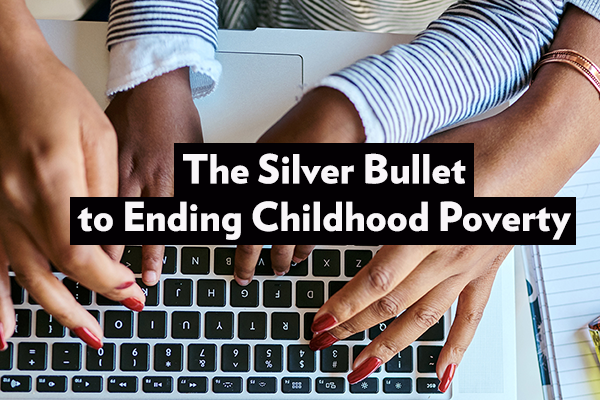Media

The Not-So Secret Trick to Raise Kids out of Poverty
Innassa, a Pittsburgh native, was a stay-at-home mom for her two sons while her husband worked. Then, he got injured—and three surgeries later, still hasn’t recovered. “He’s talking and can understand us, but he’ll be on seizure medication for life,” says Innassa.
This year with no salaried income has been challenging for her family, especially for the boys, who are starting to eat with teenager appetites. Their situation is a painful reminder that while the economy continues to grow poverty is still the reality for many Pennsylvanians.
In fact, concentrated child poverty is accelerating in Pennsylvania, according to the Annie E. Casey Foundation.[1] In Growing up through the Cracks, the Pittsburgh Post-Gazette highlights the plight of these children and families as they struggle to build futures where more than half of kids live in poverty.
Parental employment is the silver bullet to child poverty, especially in cases where only mom is working.
Thankfully, when times are tough, there are neighborhood resources families can turn to. Innassa and her family take weekly trips to the Greater Pittsburgh Community Food Bank, where they are provided with healthy, high-quality food that’s quick to prepare.
Thanks to the surplus produce of local farmers and manufacturers, and the generosity of neighborhood food drive donors, the Food Bank is able to help 110,000 people every month. Organizations like these are crucial for families in poverty. But nothing beats having a job—which is what ultimately turned things around for Innassa and her family.
“It’s been a challenging year for us,” she says, “But I recently got a job working nights, which is going to make life easier for us. I don’t know how much I’ll be earning, but I know the bills will get paid, and the kids will have food.”
Innassa’s situation is a painful reminder that not every child in poverty has missing parents—for some, the parents just aren’t able to make ends meet. However, the latest US Census statistics[2], indicate dramatic progress for single parents between 2017 and 2018.
According to the City Journal, households lacking a father’s income have greatly benefited from a combination of welfare reforms that require recipients to work and today’s robust economy.
The proportion of workers in female-householder families who worked full-time, year-round increased 1.9 percentage points to 62.4 percent. The rise in full-time, year-round work led to an increase in incomes and earnings at the household level. In 2018, real median income for female, no spouse present households increased 5.8% and real median earnings increased by 7.6%. That comes out to 649,000 fewer poor American children. . . the percentage of Hispanic kids living in poverty dropped 7.1 percentage points in one year.
The poverty rate for female-headed households is now the lowest rate on record. The results are in: parental employment is the silver bullet to child poverty, especially in cases where only mom is working.
While every family situation is different, everyone can agree on basic reforms to the welfare system that encourage the able-bodied to support their kids. And that’s not to say that these families won’t still need help: children in single-parent households will always be financially worse off on average than those in two-parent households. But thankfully, local institutions like the Greater Pittsburgh Community Food Bank consistently fill the gap.
The best way to ensure all residents benefit from today’s economic boom is helping them find work that will improve their quality of life. Welfare work incentives (SB 847) have recently been introduced to bring this benefit to families across the commonwealth.
Moms like Innassa can tell you—kids in poverty need parents with gainful employment. Policies to incentivize work and create jobs will pull even more families out of poverty.
[1] Annie E. Casey Foundation, “Children Living in High Poverty, Low Opportunity Neighborhoods,” September 24 2019, https://www.aecf.org/resources/children-living-in-high-poverty-low-opportunity-neighborhoods/.
[2] U.S. Census Bureau, “Income and Poverty in the United States, 2018,” https://www.census.gov/library/publications/2019/demo/p60-266.html.